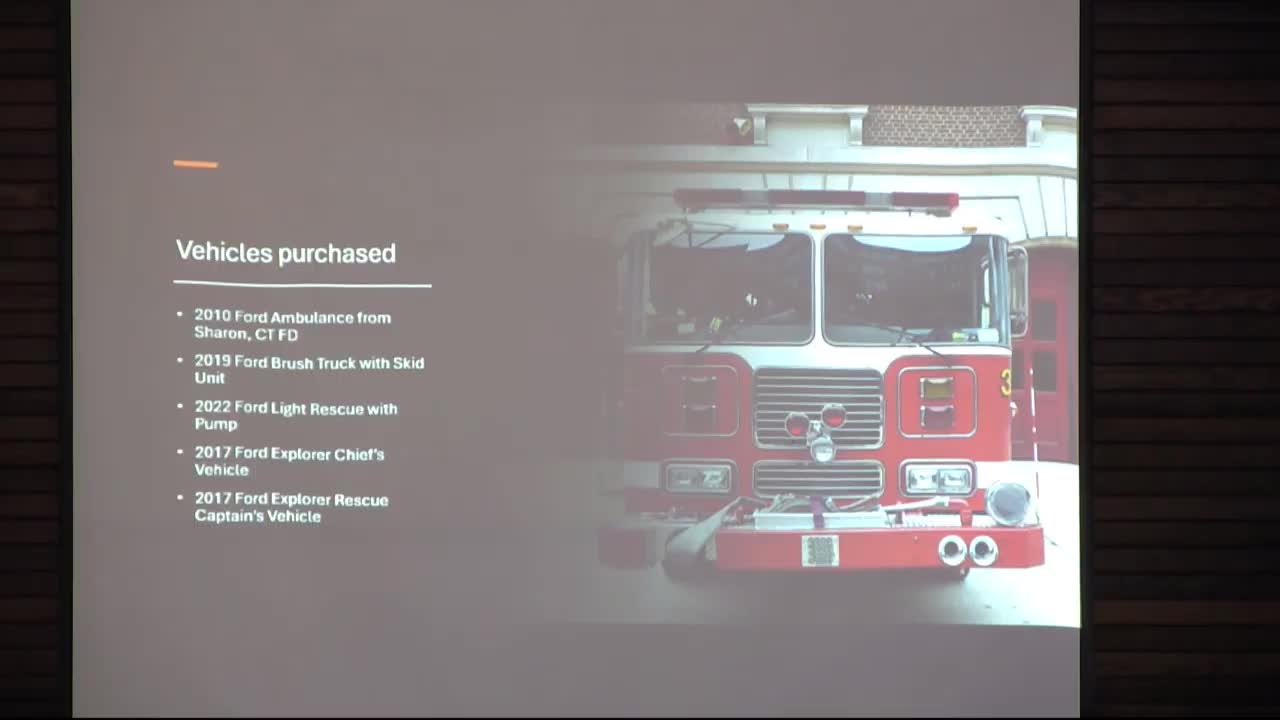East Clinton Rescue Squad recognized as Dutchess County EMS Agency of the Year
May 10, 2025 | Clinton, Oneida County, New York
This article was created by AI summarizing key points discussed. AI makes mistakes, so for full details and context, please refer to the video of the full meeting. Please report any errors so we can fix them. Report an error »

In a recent meeting held at the Town of Clinton's city hall, local officials gathered to discuss the future of emergency medical services (EMS) and fire response in the community. The atmosphere was charged with a sense of urgency as the chief and rescue captain presented updates on their operations, highlighting the critical role of volunteer services in maintaining public safety.
The meeting began with a commendation for the East Clinton Rescue Squad, which was recognized as the Dutchess County EMS Agency of the Year. This accolade underscored the squad's commitment to providing basic life support services, despite the limitations that come with being a volunteer organization. The chief explained that while they can administer essential treatments like oxygen and epinephrine, they do not have the capacity for advanced life support, which requires more extensive training and resources.
A significant point of discussion was the financial implications of EMS services. The chief clarified that while the East Clinton Rescue Squad does not charge residents for rides to the hospital, neighboring districts have opted for paid services, resulting in substantial costs to taxpayers. For instance, the town of Stamford spends $750,000 annually to contract with an ambulance service, a figure that far exceeds the budget of the East Clinton squad.
The chief also shared impressive statistics about their response rates, boasting a 98.8% success rate in answering calls since the beginning of 2022. This performance stands in stark contrast to other districts, where response rates can drop significantly due to staffing shortages. For example, the town of Milan reported that 39% of the time, they could not dispatch an ambulance when needed.
As the meeting progressed, officials discussed the challenges posed by a lack of volunteers, which has forced some districts to explore costly alternatives. West Clinton, for example, has begun hiring emergency medical technicians, a move that has proven effective but comes with a hefty price tag of around $300,000 per year.
The chief emphasized the importance of community support for the volunteer squad, noting that their ability to respond effectively hinges on local engagement and funding. He expressed pride in the dedication of the volunteers, who often balance their responsibilities with full-time jobs, ensuring that emergency services remain available even during the day.
As the meeting drew to a close, the chief reiterated the need for continued investment in volunteer services to maintain the high standards of emergency response that the community has come to rely on. The discussions highlighted not only the successes of the East Clinton Rescue Squad but also the pressing challenges facing emergency services across the region, leaving attendees with a renewed sense of purpose and a call to action for community involvement.
The meeting began with a commendation for the East Clinton Rescue Squad, which was recognized as the Dutchess County EMS Agency of the Year. This accolade underscored the squad's commitment to providing basic life support services, despite the limitations that come with being a volunteer organization. The chief explained that while they can administer essential treatments like oxygen and epinephrine, they do not have the capacity for advanced life support, which requires more extensive training and resources.
A significant point of discussion was the financial implications of EMS services. The chief clarified that while the East Clinton Rescue Squad does not charge residents for rides to the hospital, neighboring districts have opted for paid services, resulting in substantial costs to taxpayers. For instance, the town of Stamford spends $750,000 annually to contract with an ambulance service, a figure that far exceeds the budget of the East Clinton squad.
The chief also shared impressive statistics about their response rates, boasting a 98.8% success rate in answering calls since the beginning of 2022. This performance stands in stark contrast to other districts, where response rates can drop significantly due to staffing shortages. For example, the town of Milan reported that 39% of the time, they could not dispatch an ambulance when needed.
As the meeting progressed, officials discussed the challenges posed by a lack of volunteers, which has forced some districts to explore costly alternatives. West Clinton, for example, has begun hiring emergency medical technicians, a move that has proven effective but comes with a hefty price tag of around $300,000 per year.
The chief emphasized the importance of community support for the volunteer squad, noting that their ability to respond effectively hinges on local engagement and funding. He expressed pride in the dedication of the volunteers, who often balance their responsibilities with full-time jobs, ensuring that emergency services remain available even during the day.
As the meeting drew to a close, the chief reiterated the need for continued investment in volunteer services to maintain the high standards of emergency response that the community has come to rely on. The discussions highlighted not only the successes of the East Clinton Rescue Squad but also the pressing challenges facing emergency services across the region, leaving attendees with a renewed sense of purpose and a call to action for community involvement.
View full meeting
This article is based on a recent meeting—watch the full video and explore the complete transcript for deeper insights into the discussion.
View full meeting
